LEARNING TASK 2 : Describe short-term hazards in the trades
Excavations
An excavation is the removal of ground material by digging in order to bury or access pipelines, conduits, foundations, etc. Trenches are special types of excavations in which the depth exceeds the width. Sometimes the terms excavation and trench are used interchangeably, but there is a difference. Because trenches are narrow, workers can easily become trapped.
Hazards involved with trench and excavation work include:
- cave-ins and crushing
- water accumulation
- falling objects
- collapse of adjacent structures
- toxic gases in the soil
Cave-ins are the most common and deadly hazard in excavation work. When dirt is removed from an excavation, the surrounding soil can become unstable, with gravity forcing it to collapse. If a trench is deeper than 1.2 metres (4 ft.) you must be protected from cave-ins by either trench shoring or sloping. You must know and follow the appropriate shoring and sloping requirements before entering or working around an excavation.
Shoring
Several methods can be used to shore up a trench. Hydraulic shoring uses hydraulic pistons that are extended outward until they press prefabricated plates against the trench walls as shown in Figure 1.
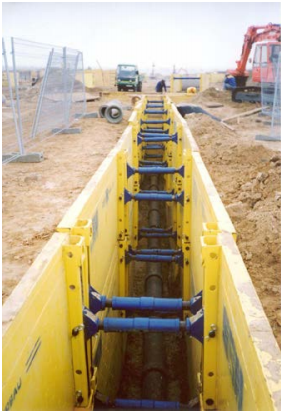
Timber and plank shoring is used if the trench is too wide or too irregular for prefabricated shoring, as shown in Figure 2.
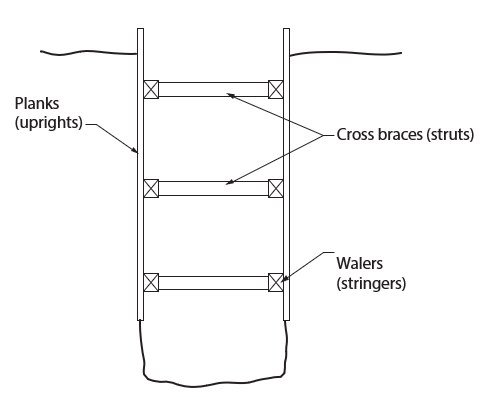
The size and spacing of the parts of a timber and plank system are given in the WorkSafeBC OHS Regulation. Size and spacing vary depending upon the type of soil that the trench is dug into and the depth of the trench.
Planks may be spaced if the soil is stable, but must be close fitting if the soil is loose and free running. Plywood sheathing is sometimes used in place of planks.
Timber shoring is slow to install because it must be installed from the top down. It is unsafe for a worker to enter the trench before it is shored.
Trench shields or trench boxes are prefabricated structures (Figure 3). These are not adjustable within the trench and are designed to protect the workers, should a collapse occur, whereas shoring is designed to prevent the walls from collapsing.
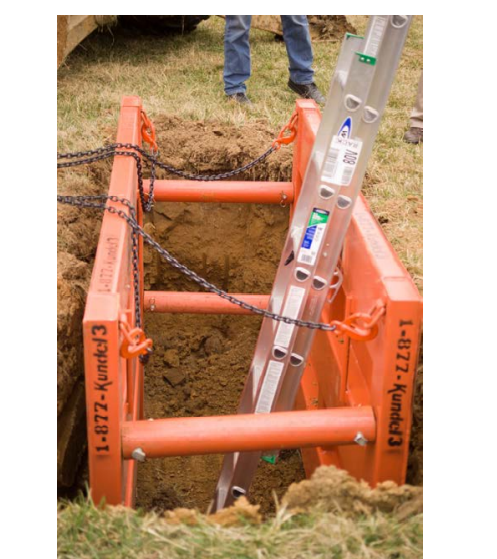
Sloping
Sloping a trench creates a naturally stable slope, similar to that which loose excavated material forms when dumped on a level surface, known as the angle of repose. Unshored trench and excavation walls must be sloped flatter than the angle of repose, but in no case steeper than 3 horizontal to 4 vertical units unless otherwise specified in writing by a professional engineer (Figure 4).
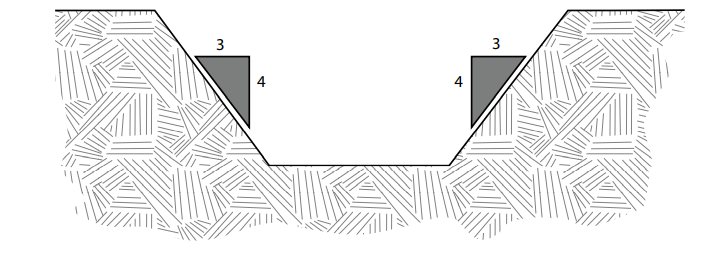
As demonstrated in Figure 5, sometimes a combination of sloping and shoring is used.
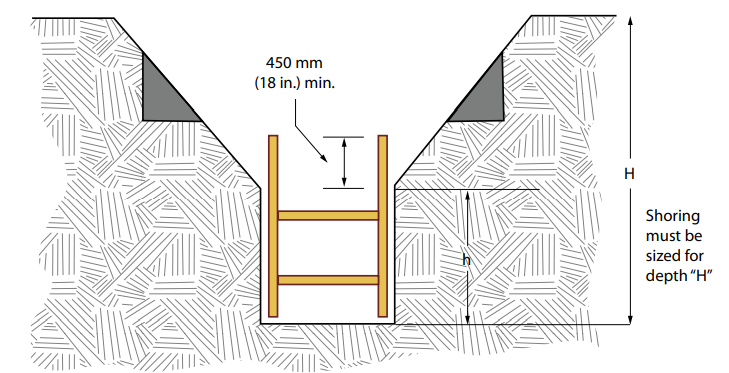
Another method of sloping is called benching. All benched excavations 6.1 m (20 ft.) or less in depth shall have a maximum rise between benches of 1.2 m (4 ft.). For unrestricted worker access at any level, the width of the bench immediately above any particular rise shall not be less than 1.5 times the height of that rise. For example, in Figure 6 the minimum bench width for a 1.2 m (4 ft.) rise would be 1.8 m (6 ft.)

Keep all piles of material and equipment at least two feet away from the edge of an excavation. Loose rock, soil, materials, and equipment on the face or near the excavation can fall or roll into the excavation, or overload and possibly collapse the excavation walls. When working in a trench, there has to be a safe means of access and egress for workers, such as a ladder, stairway, or ramp. For long trenches you will require multiple exit points.

